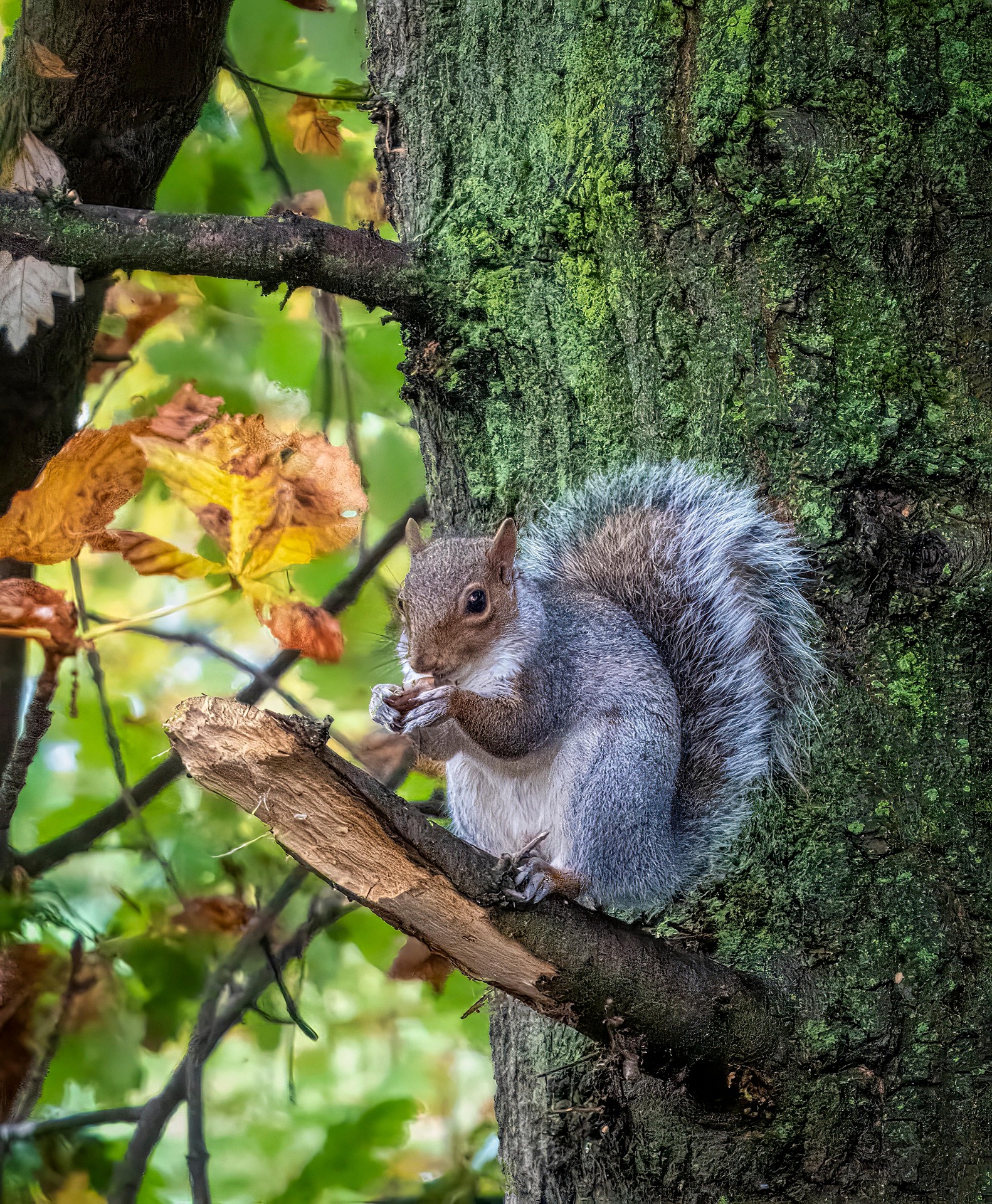 Hi! I'm Losti and as you might have been told, I am an otter. I love exploring and so I am here to be your guide along the trail. After you have found the statue of my relative, walk along the path furthest away from the river to find the first post. When you have completed your rubbing, you will have a picture of a grey squirrel. If you look carefully among the branches of the trees, you might see a real one. You could just see one running across the grass or even swimming across the river. The squirrel is silver-grey in colour with a brownish face and looks like this:
Hi! I'm Losti and as you might have been told, I am an otter. I love exploring and so I am here to be your guide along the trail. After you have found the statue of my relative, walk along the path furthest away from the river to find the first post. When you have completed your rubbing, you will have a picture of a grey squirrel. If you look carefully among the branches of the trees, you might see a real one. You could just see one running across the grass or even swimming across the river. The squirrel is silver-grey in colour with a brownish face and looks like this:

The grey squirrel was introduced into the UK in the nineteenth century. They carry the sqirrelpox virus, to which they are immune, but this is fatal to the native red squirrel. As a result, the greys rapidly out-competed the reds, which are now found only in Scotland, parts of Wales, the Lake District, and some offshore islands. Grey squirrels are found in woods and domestic gardens, and may appear friendly, but they can bite if they feel threatened. They are very agile climbers and scamper around in search of nuts, acorns, and large seeds. They often take food from bird tables. They are particularly fond of hazelnuts, which they can crack open with their powerful teeth.
Squirrels hide away for much of the winter and will hide food during the autumn to provide themselves with a winter food supply. A squirrel's nest, or drey, is built from twigs and leaves in the fork of a branch high up in a tree. It is in their drey that they rear their young (called kittens), and they can have two or three litters of kittens each year.
 Now that you have read all about the squirrels, you are probably ready to move on. Walk a little further along the path to find the next post, which is near a turning to the left.
Now that you have read all about the squirrels, you are probably ready to move on. Walk a little further along the path to find the next post, which is near a turning to the left.
When you are at the next post PRESS THIS BUTTON